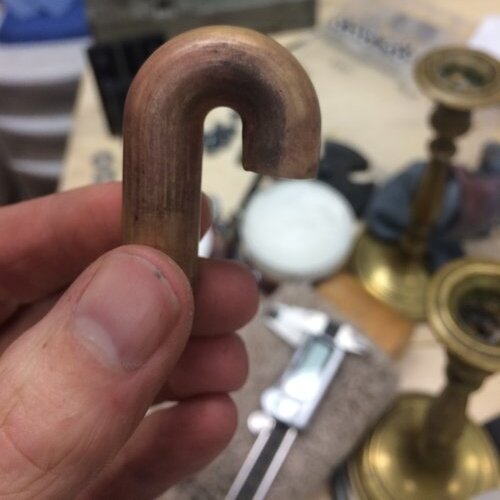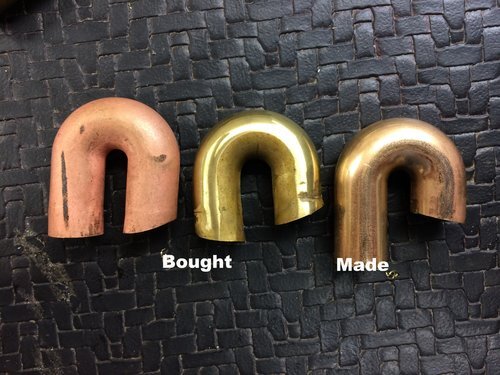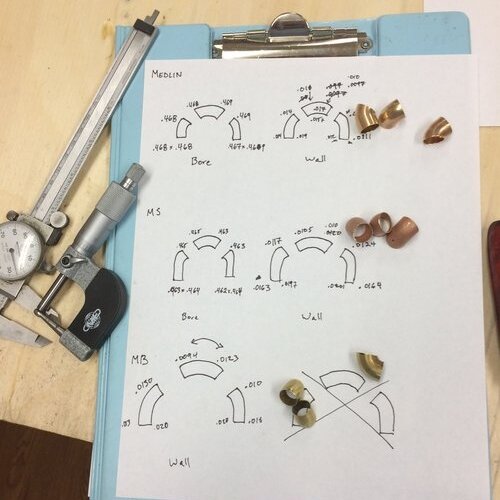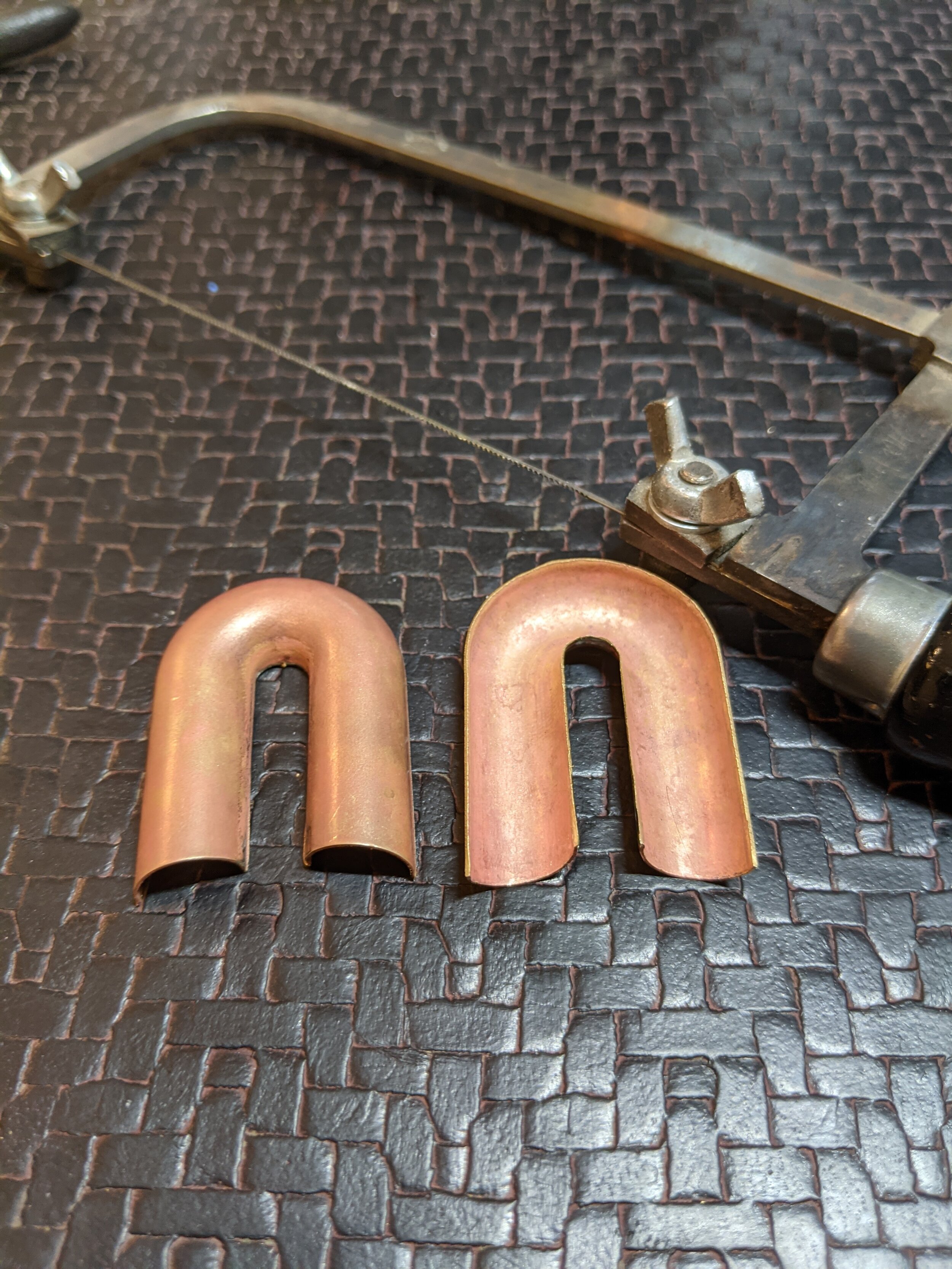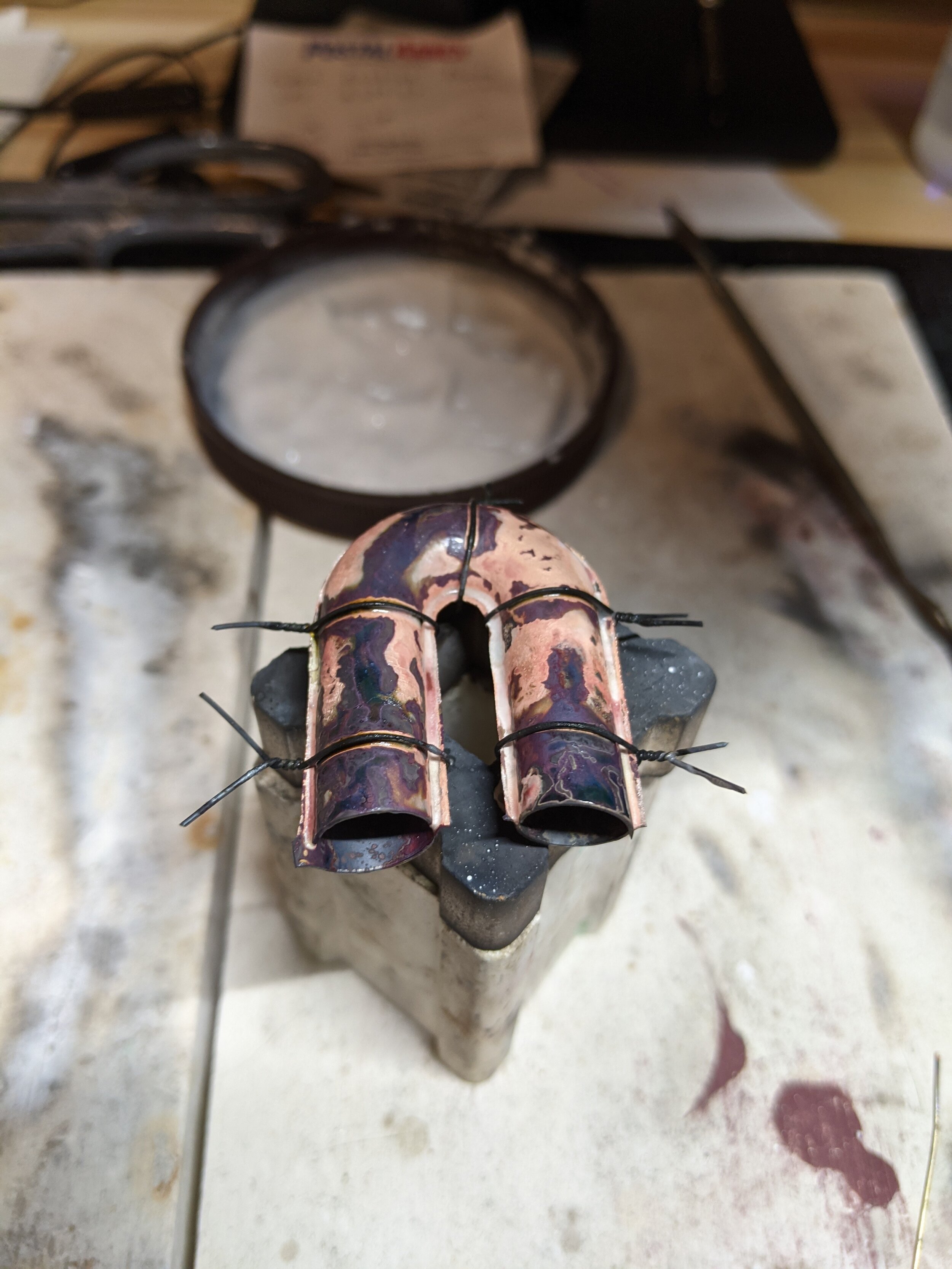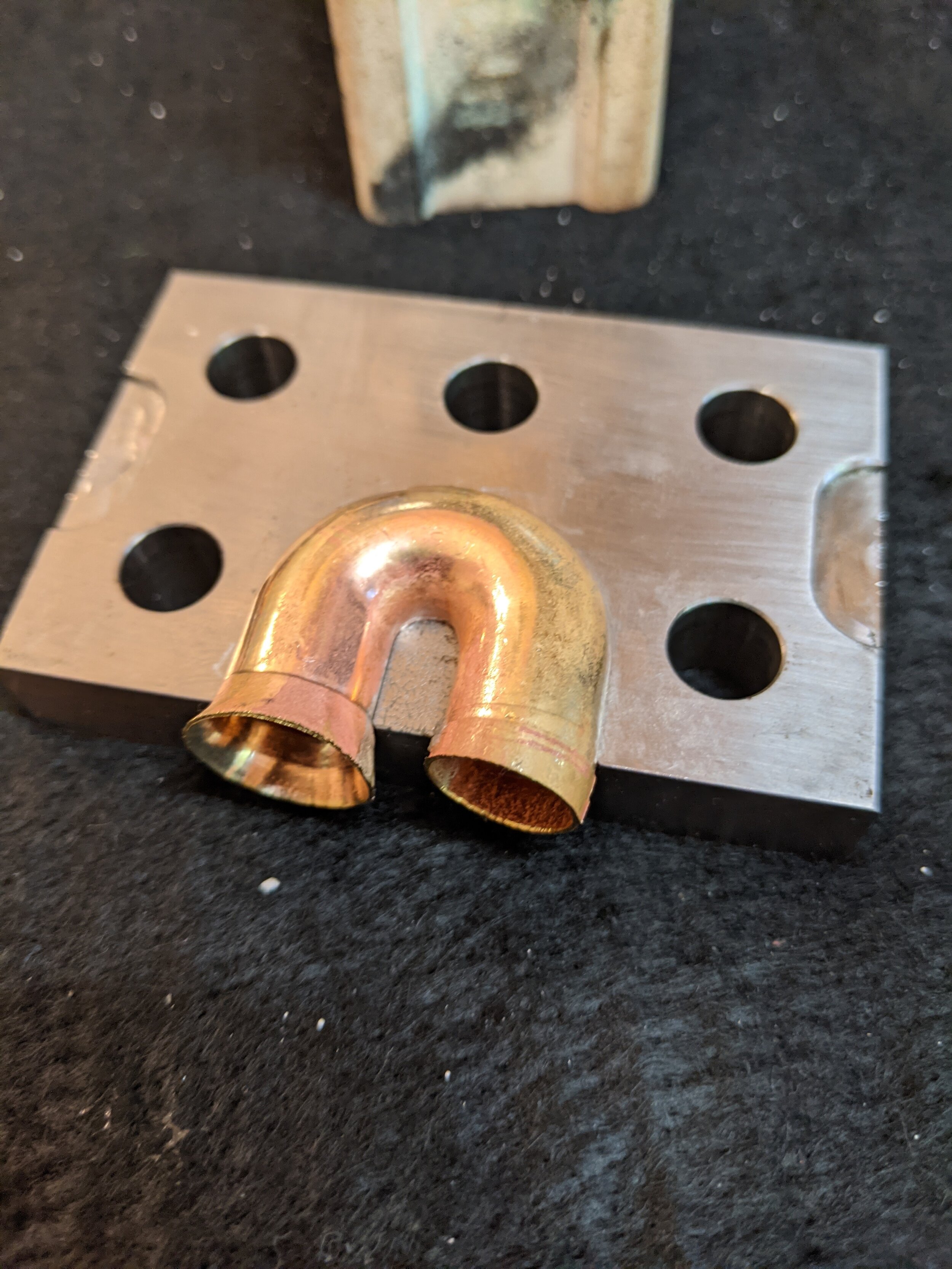Making half tone bows
I make a lot of my own parts. There is a very simple reason.
Industrial processes are for speed and repeatability, not necessarily quality
As a hand maker, it is my responsibility to take advantage of industry when I can, and reject it for traditional processes when I can make it either better, or more appropriately for my horns. Recently, I was able to develop the process for making half tone bows (there are many names for this). It is a very labor intensive procedure, especially considering that I can purchase this part for around four dollars. I developed an in house technique for two reasons:
1. Bows that I received from multiple sources were undersized for a .468 bore.
2. A heavy grain pattern indicated that the brass was annealed to very soft and then stretched almost to its limit.
Before taking on the additional task of making each half tone bow, it is important to look very closely at my technique and honestly decide if it is indeed a better part than I can buy.
To do this, I took three half tone bows made by myself and two other companies. These are two widely used companies that I have very good relationships with so I will not use their names. This is important, I am not trying to critique anyone else's product. I simply am trying to determine whether or not it is worth the effort to make this part in house.
The questions that I was interested in were:
1. What was the bore size and was it consistent throughout the entire bow?
2. What happened to the wall thickness around the corners?
3. How did the manufacturing technique contribute to the fit and finish?
To find out, I cut each bow at the corners in order to access the areas deep in the crook. I then took cross sectional bore measurements and wall thickness measurements for each end and compared them.
I learned quite a bit about half tone bows during this process:
1. Purchased bows were closer to .463- .465. This makes them the tightest spots on .468 horns, in an area where most people believe that there is already significant restriction. By making them in shop, I was able to produce true .468 bore crooks.
2. The bows produced in the shop had a much more even grain structure meaning that they underwent multiple incremental procedures rather than one severe one. This maintains more of the metal integrity and produces a more natural grain pattern in the final part.
3. Producing these bows require procedures that do not result in consistent wall thicknesses across the part. I was able to at least match what the mechanical processes results were in the wall thickness numbers, but there is more work to be done in this area.
Many older horns have half tone bows made from two pieces and brazed together. While this is probably the best way to get a consistent wall thickness, I'll have to save that development for later. For now, it seems that I can get a more consistent finish and grain pattern, plus a true .468 bore, without thinning the wall thickness any more that is acceptable in purchased parts. In spite of the additional time and effort, I am always extremely pleased to add another 1% improvement, anywhere I can.
UPDATE!
I was able to take another look at this project and try the two halves brazed together. It was a remarkable improvement in both roundness and bore consistency throughout the part. It also removed the step that is caused when the inside radius of the crook is extra thick.


